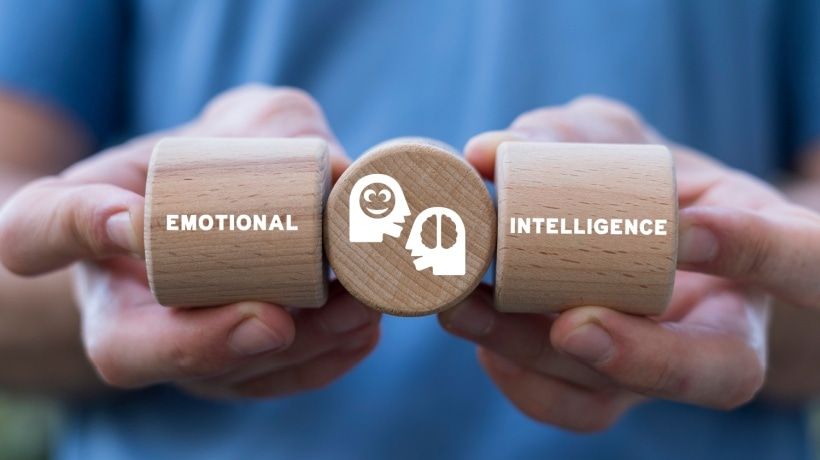EI: The Reason AI Hasn't Taken Your Job (Yet)
Artificial Intelligence (AI) is transforming how we build, deliver, and scale learning experiences. It promises personalization at scale, instant feedback, and predictive insights. It can do in seconds what used to take teams of learning designers weeks (I did the calculations of how long it took me to create an online course in 2025 and how long it took me in 2012, using a specific AI course creator I've been using at work, and the result excited me and shocked me at the same time). And yet, as we rush to optimize every interaction, there's a real risk that we design for efficiency and forget about humanity. Because here's the truth: AI can tell you what your learner clicked. But it can't tell you why they disengaged or how they felt. Working across diverse cultures from high-context environments like Japan to feedback-averse markets like Indonesia, I've learned that emotional intelligence (EI) isn't just a soft skill. It's a survival skill. And as we bring AI deeper into our online learning strategies, EI needs to remain our compass. Here's how to strike the right balance.
Let AI Do What It Does Best...
1. Personalize Learning Journeys, But Don't Overcomplicate Them
AI allows us to move away from one-size-fits-all content. With the right data, platforms can recommend learning modules based on role, proficiency, or even behavioral patterns. That matters in APAC, where learners may face not just language barriers but also different learning norms. Personalized paths help learners build confidence and avoid overwhelm, especially if your platform is being used across multiple countries or regions.
2. Automate Repetitive Tasks To Free Up Human Capacity
AI is great for nudges, reminders, and instant feedback. Let your chatbot handle "Where's my certificate?" so your L&D team can focus on facilitating coaching conversations or designing culturally relevant learning interventions that can create the base knowledge of an AI coach. In customer success roles, we often talk about "high tech, high touch," and AI allows you to rebalance that ratio thoughtfully.
3. Use Predictive Analytics To Support Early Intervention
One of the most powerful aspects of AI in learning is its ability to flag patterns: drops in engagement, skipped modules, or hesitation during assessments. These signals help L&D teams to act early, before a learner gives up. This is especially important in cultures where asking for help may be seen as a weakness. AI gives us a second set of eyes but we still need the EI to know how to act on what we see.
...But Let Humans Do What Only Humans Can
1. Train Your Team To Interpret AI Insights With Emotional Nuance
A dashboard might tell you that your learning campaign underperformed in Taiwan. But did it clash with the Chinese New Year? Did the tone of the copy resonate culturally? Did the course require discussion when the team prefers reflection? Understanding emotional tone, social context, and regional norms is what turns data into insight, and it's something AI still can't do on its own.
2. Build "Human Moments" Into Digital Learning
Digital doesn't have to mean dehumanized. Combine AI-powered platforms with synchronous touchpoints: live Q&As, peer reflection sessions, or coaching circles. This hybrid approach builds psychological safety, something learners in hierarchical or collectivist cultures may not easily find in a purely self-paced course. In my experience, a brief synchronous group session can significantly boost adoption, even when the audience seems to have gone completely silent on you.
3. Prioritize Emotional Intelligence As A Learning Outcome
EI isn't fluff. It's teachable, applicable, and increasingly critical, especially for people managers. Teach leaders to recognize emotional triggers, give feedback across cultures, and hold space for vulnerability. AI might deliver content efficiently, but leaders shape the learning climate. Emotionally intelligent facilitation makes or breaks the impact of your program.
The Sweet Spot: AI + EI
The future of learning isn't man versus machine; it's man with machine, guided by empathy. The more we automate, the more intentional we need to be about how we show up for each other. In customer success, I've seen how critical it is to interpret not just what a client says, but what they don't. I've led rollouts where the tech was perfect, but the engagement only landed once we aligned tone, timing, and emotional context. That's why emotional intelligence is more important than ever in this AI era. And no, I'm not worried about AI replacing us. Until it can handle a silent virtual room in three languages or sense the discomfort behind a learner's polite "yes," we still have the upper hand.









